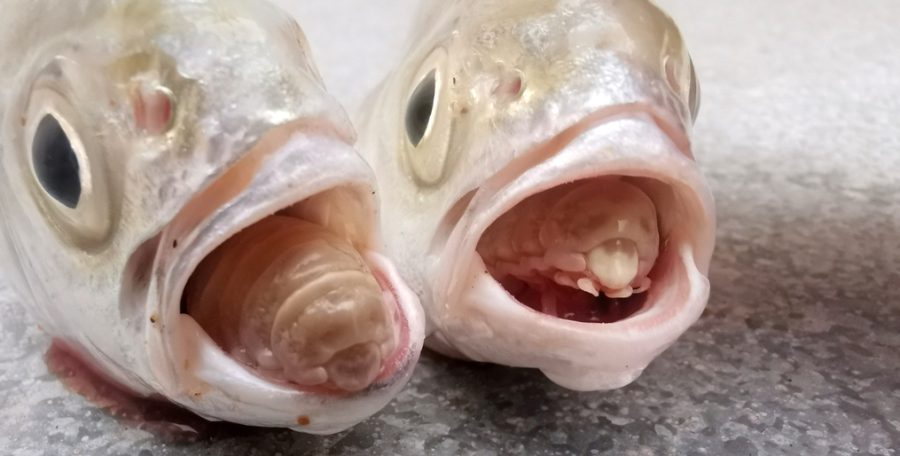
The terrifyingly real, diminutive monster of the deep, and the stuff of nightmares, it’s the tongue-eating louse. These creatures live in the Pacific and Atlantic Oceans. What they do, besides haunt people’s dreams, is find their way into the mouth’s of fishes, through their gills, and there they take over. These creatures are listed as Data Deficient by the IUCN. More research has to be done on them, but considering the fact that they are a parasite, they will likely fall into the category of Least Concern, or stay Data Deficient.
First the Stats…
Scientific name: Cymothoa exigua
Length: Up to 1.1 inches long
Lifespan: Unknown
Now on to the Facts!
1.) The tongue-eating louse is an endoparasite (a parasite that lives, like a tapeworm, inside its host).
2.) These critters live by first finding their way into the mouth of a fish. Then they will grab onto their host’s tongue, sever the blood vessels – causing necrosis (tissue death), which causes the tongue to shrivel and die. The louse then replaces the fish’s tongue and consumes a good deal of food that the fish eats.
3.) Not only do they replace the fish’s tongue, they also reproduce in the fish’s mouth.
4.) When the host fish dies, the louse will leave the oral cavity and cling to the outside of the dead fish. It is uncertain what they do from that point.
5.) These parasitic isopods are the only known parasite known to eat and replace a host’s organ or body part.
But wait, there’s more on the tongue-eating louse!
6.) Tongue-eating louses reproduce sexually.
7.) These parasites are protoandritic hermaphrodites and start out life as males. Once they reach about .4 inch long, they can transform into a female, as the need arises.
Did you know…?
There was a consumer who filed a lawsuit after claiming to have been poisoned by eating a red snapper, infested with a louse. However, the case was dismissed when it was proven that these louses are neither poisonous, nor harmful to humans; and some isopods are even consumed as a delicacy.
8.) The fertilized eggs are kept in a marsupium, like a kangaroo.
9.) Males tend to cling to the fish’s gills, whereas the females go after the tongue.
10.) These organisms don’t go after humans, however, they can and will bite, if handled.
Now a Short Tongue-Eating Louse Video!
Be sure to share & comment below! Also, check out the Critter Science YouTube channel. Videos added regularly!
Want to suggest a critter for me to write about? Let me know here.
Think you know a lot about critters? Try your hand at these fun, free quizzes:



